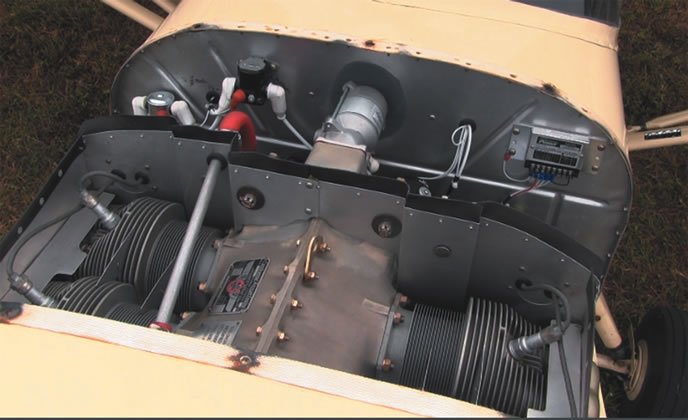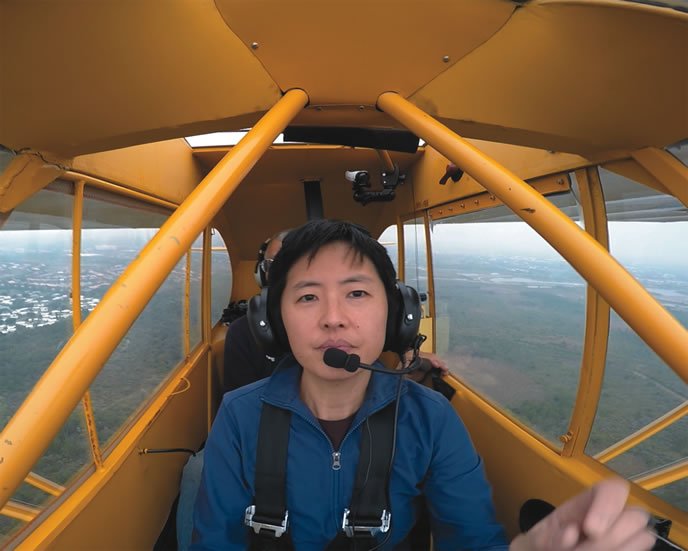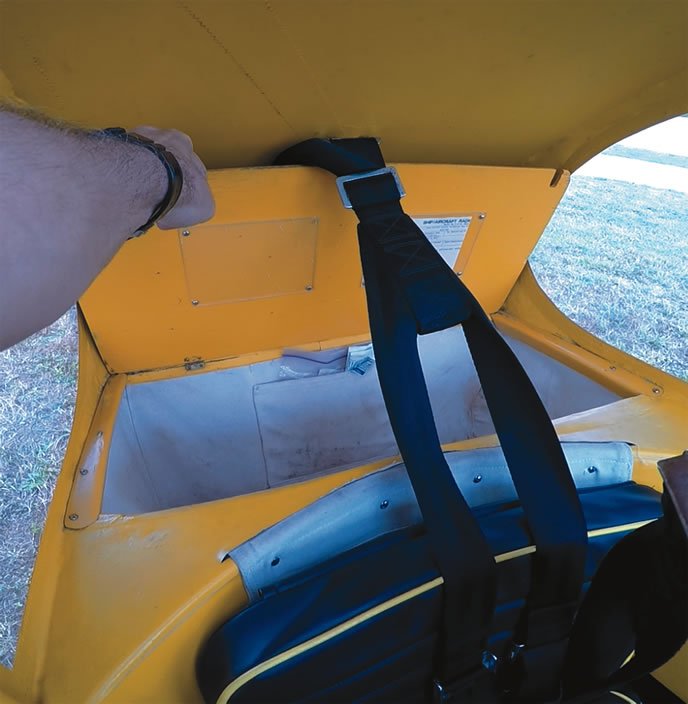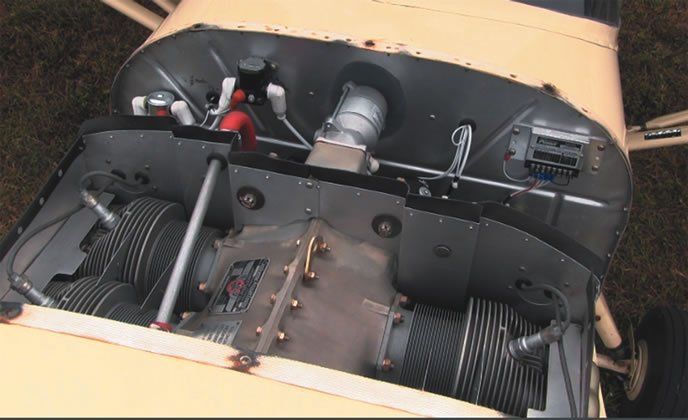While pilots grow old waiting for the FAA to reform the Third Class medical, light sport flying remains the last refuge to stay in the air. And vintage airplanes like Pipers venerable J-3 Cub or the Aeronca Champion actually promise affordability, if not comfort and technological panache.
Taildraggers both, these two aircraft have always enjoyed a following and now theyre getting a closer look as potential LSA choices. There are plenty out there and the prices are right when compared to a new or even recent-model light sport costing four times as much.
While buying a Cub or Champ is a practical way to own an inexpensive light sport airplane, there are some caveats. They don’t fly like or as we’ll as modern certified airplanes, theyre not always snap-of-the-fingers easy to maintain and if you cant afford or gain access to a good hangar, forget it. For as tough as these old birds are in the air, theyre tender when exposed to even the mildest elements. But if you find a good one, care for its minimal needs and fly it regularly, there’s no cheaper way to own and fly an airplane. In this report, we’ll look at both aircraft, warts and all.

The Legacy List
The list of LSA-compliant legacy airplanes is quite extensive, encompassing at least seven manufacturers and about 130 models of both land and seaplanes. Populations of these aircraft vary, but the J-3 and versions of the Champ are among the most numerous, if not the cheapest.
Barnstormers features ads for Taylorcraft BC-12Ds selling for half the price of a moderately restored J-3 and LSA-compliant Ercoupes or Luscombes are likely to be cheaper, too. Just remember that not all variants of these airplanes meet the 1320-pound LSA limit.
Drilling down into the Piper Cub list, there are 27 listed models certified under 1320 pounds, including some exotics youre never likely to clap eyes on, such as the E-2, J-2 or even the J3C-40. There were three primary models of the J-3, says Steve Krog, who operates the fount of all things Cub, the Wisconsin-based Cub Club. There was the J-3C, the J-3L and the J-3F. Those stood for Continental, Lycoming or Franklin. Krog says you can count on one hand the number of Lycoming-powered Cubs and maybe two hands for Franklins. So all the rest are Continental powered, he says, noting that many have been converted, some more than once.
Pipers production started in late 1938, with a few airframes, and picked up during World War II with the L-4. It took off again for the civil market in 1945. J-3 production ended in May of 1947 with a total of about 19,700 manufactured for every variant built. Today, Krog estimates there are 4700 J-3s on the U.S. registry flying or being restored. That means if you want one, theyre out there and the most likely candidate will be a post-war J-3C65. Its common to find these with C-85 or C-90 engines, which substantially improve performance. While the Cub remained a Piper product and the company held together for years, the Aeronca Champ enjoyed no such stability. Its antecedents date to the 1920s, but the modern Champ as we know it today was a post-war creation. It was actually designed in 1944 at the same time that its side-by-side seating stablemate, the Chief, was under development.
Although the original Aeronca predates the Cub, the Aeronca line is really a product of the post-war years, when it enjoyed brisk sales among military pilots returning home after the war.
While Piper moved beyond the Cub in 1947, Aeronca kept at it until 1951, producing 7AC Champs and 11-series Chiefs. The company was sold to businessman Bob Brown in 1954 who formed Champion Aircraft, which was itself sold to Bellanca in 1970 and carted to Minnesota, where the airplane served as the basis for the Citabria and Decathlon lines. American Champion acquired the company in 1989 and has continued to both develop new models and support the original aircraft. In 2007, it introduced the LSA-compliant 7ECA Champ powered by a Continental O-200-D, the lightweight version of the original O-200.
Aeronca built 11,181 post-war aircraft at its Middletown, Ohio, factory and many are still active on the registry. The list of LSA-compliant models is long-51, to be exact-but many of these are museum pieces that arent practical to own, if they even exist. The core of the Champ market is the 7 series-the AC, BCM,CCM and the DC. The 11-series Chief also meets LSA requirements.
Aeronca expert Bill Pancake, who we consulted for this article, says about 7200 of the 7AC models were built. The airplane we flew for our head-to-head comparison is a 7DC beautifully restored by Vern Hiett and Dan Gulandri. Only 168 were built. Although its virtually identical to the 7AC, the DC emerged from the factory with a Continental C-85. It had a large dorsal fin and, in addition to the standard forward fuselage tank, it also had a 13-gallon wing tank.
Construction
Both airplanes are products of another era of aircraft construction that has more to do with the 1930s than GAs manufacturing heyday in the late 1970s. The Cub, owing its genesis to 1930s design sensibilities, is the more rudimentary of the two. Both are constructed of steel tubular fuselages with gas-welded joins. Aluminum is used for parts like firewalls, cowlings and fairings, but where Piper or Aeronca could use fabric, they did. Fabric was-and remains-light and practical. But if it was cheap after World War II, its not now. A full recover can cost more than the airplane is worth.

Control surfaces in both airplanes are cable controlled, fabric-covered surfaces. While on the subject of wings, when these aircraft were built, wood was the material of choice for spars, either fir or Sitka spruce. Although there’s no reliable count on this, many examples of both airplanes still have the original wooden spars, even though they can be replaced with metal. Not a good thing, that wood, right?
Not necessarily, says Bill Pancake. Have someone whos competent and knowledgeable about wood do an inspection. I have no problems with wooden spars if theyre maintained, he says.
For trim, the Cub has an automotive-style window crank that runs a cord to a jackscrew, adjusting the horizontal stabs angle of attack. This actually sort of works, just not very well. The Champ has a better system; a ceiling-mounted knob that moves a real trim tab on the elevator.
By modern standards, both the Cub and Champ have an appallingly unsafe fuel tank location. (Remember, it was the 1940s.) Its inside the cabin, behind the firewall and immediately in front of the front seat occupant. The Cub typically has a 12-gallon tank, the Champ a gallon more. Some models of the Champion have the forward fuselage tank, plus a 13-gallon wing tank. Its also possible to convert Champs to Citabria-type wings, with two 13-gallon tanks, giving the airplane a solid five hours of endurance. The J-3 can also have an aux wing tank and one mod allows two wing tanks with the removal of the fuselage tank.

Electrics, Brakes, Ergos
Both the Champ and Cub were designed without electrical systems, but many have been converted to have either electric start or both electric start and a generator to charge an onboard battery. Cub Clubs Steve Krog told us that to avoid the legal entanglements of a complete electrical system, some owners install a battery and starter, but no generator. This offers a safer alternative to propping, but the airplane will remain grandfathered as having no electrical system. He says a battery charge is good for dozens of starts.
Other choices for both airplanes include wind-turbine generators, which produce sufficient power for a radio or transponder. But increasingly, with high-quality lightweight starters and alternators available, many owners are converting both of these aircraft to C-85-12 engines that can accommodate both on accessory pads. Both aircraft are approved for these engines. The Aeronca 7DC we used for this comparison has a modified C-85 thats essentially the equivalent of an O-200. Whether the electrical upgrade is worth the investment depends on how comfortable-or uncomfortable-you are with hand propping. There’s no question propping entails significant risk.
Brakes in these vintage aircraft are adequate, but hardly impressive. You don’t need effective brakes in a taildragger except to hold the airplane during the run-up and maybe catch a developing groundloop. Original Cubs had hydraulic heel brakes with rubber expander tubes bearing against friction pads inside the drums. One upgrade that considerably improves performance is the Grove disc brake conversion described here.

Early Champs had two types of brakes, both mechanically actuated via cable. The Goodyear system used discs while the Cleveland, which many prefer, has shoes and drums. Either way, the cables have enough slack to require a little anticipatory footwork before braking is needed. Later Champs had conventional hydraulic brakes and those conversions are available for older models.
Cabin comfort isn’t a concept that applies to the J-3. While the famous clamshell door is a delight when open in flight on a warm summer evening, its a drafty, noisy nuisance during the winter. The heater is so-so. J-3 ingress and egress is awkward at best, but helped along with good upper body strength to use the ceiling tubes as support when getting in and out. The seats arent adjustable and while soloing from the rear offers plenty of legroom, the same cant be said for the front seat. Its cramped and difficult to get into.
The Champ is better, but not great. The cabin is four inches wider than the Cubs and the seat space fore to aft is six inches longer. That translates to more legroom and even space to place something on the floor without losing it. The Champ has a latching door similar to an automobile and although it cant be opened in flight, the tradeoff is a quieter, less drafty cabin, Its also warmer during the winter.
While the J-3s so-called baggage space is literally breadbox sized, the Champs is large enough to actually carry things like small bags or tools. But its not as easy to get to as the Cubs is, due to the cabin door configuration.
Fly Off
If the two airplanes, as vintage taildraggers, look somewhat alike, they don’t fly that way. The J-3 is definitely more kite like, with slightly lower wing loading. On takeoff, the tail comes up almost immediately and the Cub announces when its ready to fly, requiring just a tug to nudge it into a leisurely 300-FPM climb. Visibility from the rear seat is fairly terrible and S-turns or leaning out the open door is a must during taxi.

If you needed an adverse yaw demonstrator, the Cub would be your first pick; rudder use is a must and pilots with dead feet will soon wake them up. Stalls are gentle with little tendency to fall through or snap into a spin and the Cubs stall indicator is the lower door, which floats up if open in flight. The airplane is a little less benign if stalled in a steep turn and many fatal stall/spin accidents have occurred in just this scenario.
The J-3 isn’t hard to land, but its a challenge to land well. Many pilots don’t bother with the airspeed indicator, which is likely to be inconsistent, but rather fly the wing by sight picture and feel. For a three-pointer, touchdown just as the energy dissipates and you’ll be rewarded with a satisfying greaser. Land too fast or force it on and those two gear bungees will give you what for. The same will happen on a wheelie if you don’t time the stick-on just right.

Contrast that to the Champ, which is quite easy to three point and tends to be less fussy about the speed. The Champs oleos suck up more energy than the Cubs bungees do. Further, soloing from the front, visibility is far better during both taxi and touchdown. There’s no guessing about runway alignment. We think its an easy taildragger to learn; perhaps the easiest.
Takeoffs, however, require more attention than the Cub does. The tail is slow to rise, perhaps because the fuselage is a foot shorter and the center of mass is somewhat higher. Where the Cub requires a light touch to lift the tail, the Champ needs a more forceful push all the while minding the rudder. Although we cant support it with data, our impression is that the Cub, thanks to its longer fuselage and wider gear track, may be less susceptible to ground looping than the Champ. When the Champ heads for the ditch, you have to be on the rudder right now. The Cub seems to give a little more warning.

Neither of these airplanes will get you anywhere in a hurry, including back to the airport. A J-3 loafs along at about 70 to 75 MPH, the Champ 80 to 85 MPH. Plan for 4.5 to 5 GPH with no leaning capability to eke out efficiency. The C-85 Champ we flew for our comparison also has a better climb rate than the C-65 Cub, even though the Cub has been converted to 75 HP by dint of a different prop that allows for higher RPM. When doing circuits in the Cub, its common to settle for 500 feet in the downwind, rather than struggling to reach 1000 feet. With two heavy people aboard, 300 feet is more like it.

Conclusion
Either of these airplanes is a worthy choice for a legacy LSA. However, the Champ is clearly the better flier of the two and has more in common with what most of us know as modern airplanes than does the Cub.
Furthermore, because the Cub enjoys a unique cachet, prices are likely to be a third or more higher than a comparable Aeronca. But Bill Pancake told us Champ prices are on the rise, perhaps because more pilots are eyeing them as LSA candidates. So don’t count on a Champ always being cheaper. Cub prices in the $40,000 range arent uncommon, but the high 20s may be the average. Steve Krog told us there are always a few restored or project airplanes on the market.

Bottom line, in the Cub, youre paying more for the prestige and the sublime pleasure of having someone approach you on the ramp and say, Hey, nice Cub. Can I look inside? In the Champ, you might pay a little less for a better-flying airplane with better performance, but a lower-profile pedigree. If buying an airplane is about choices, we would say Cub vs. Champ offers exactly that.


